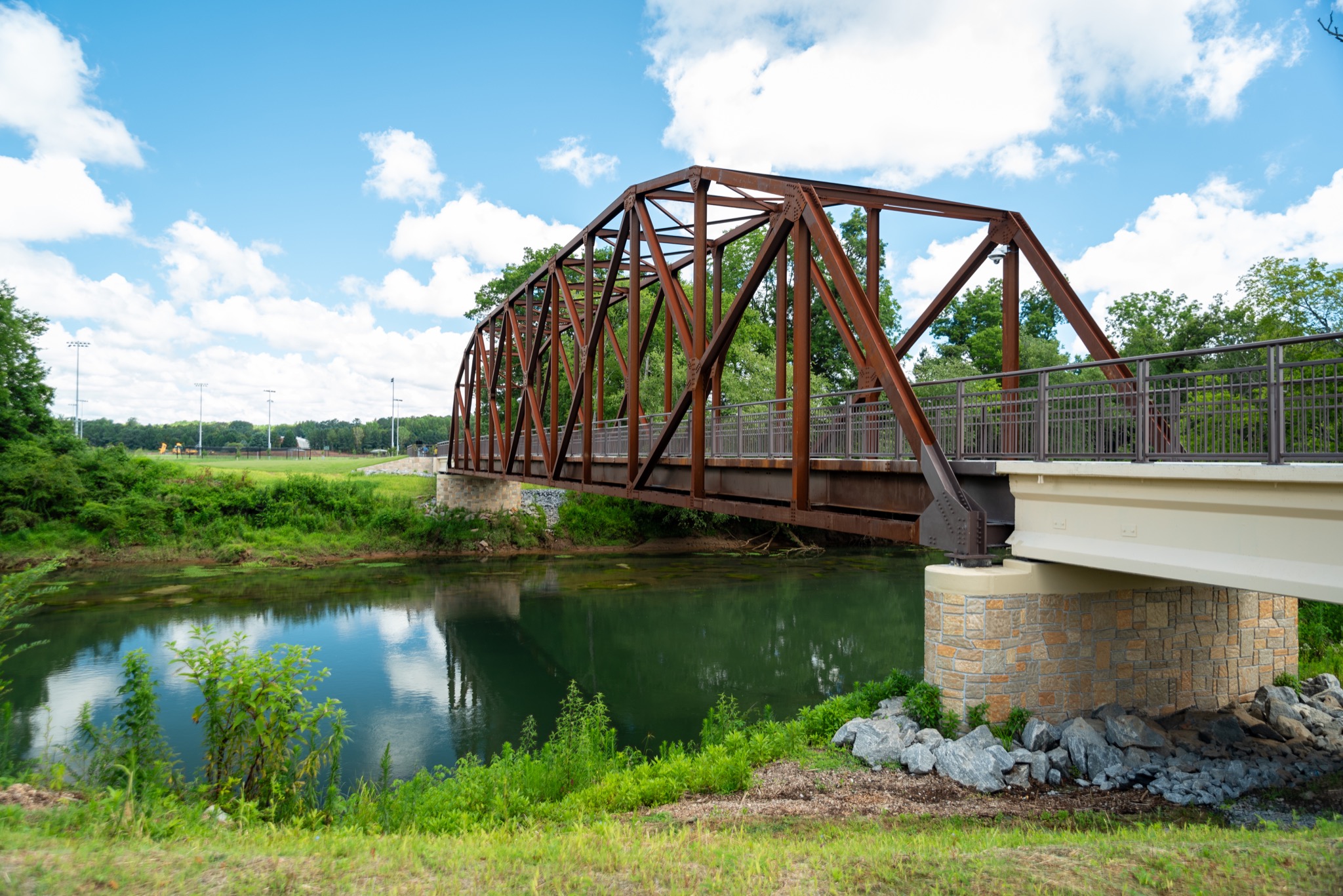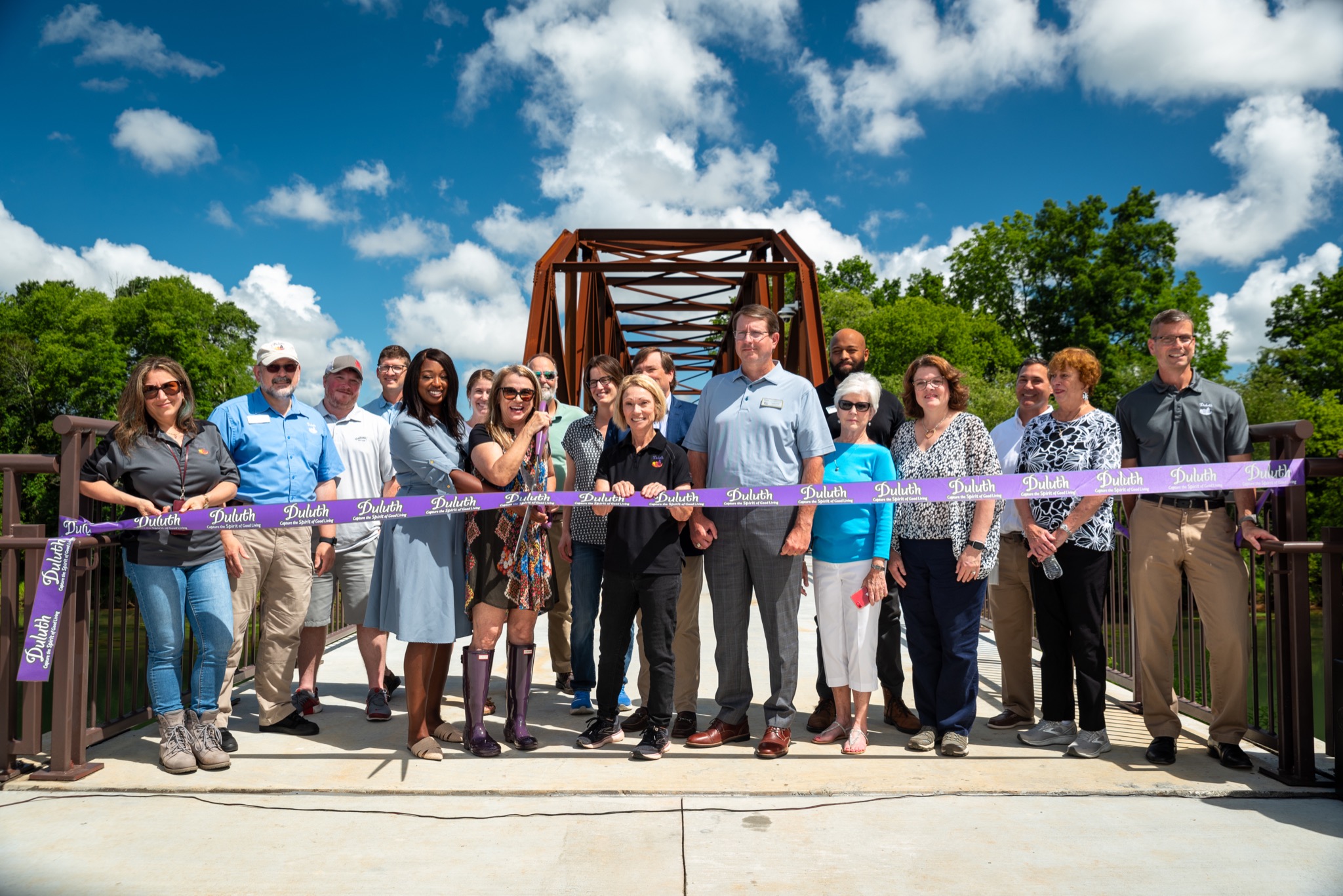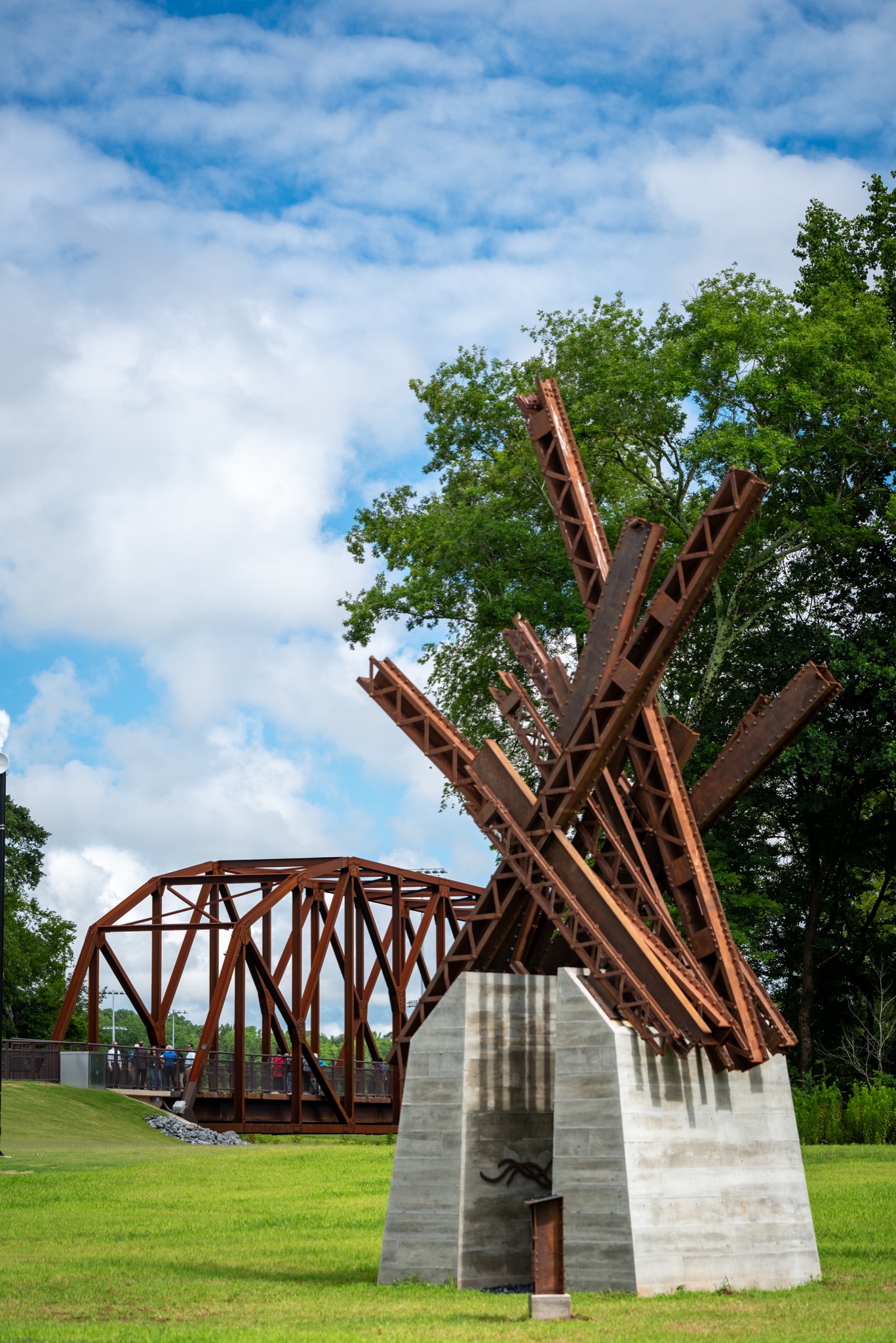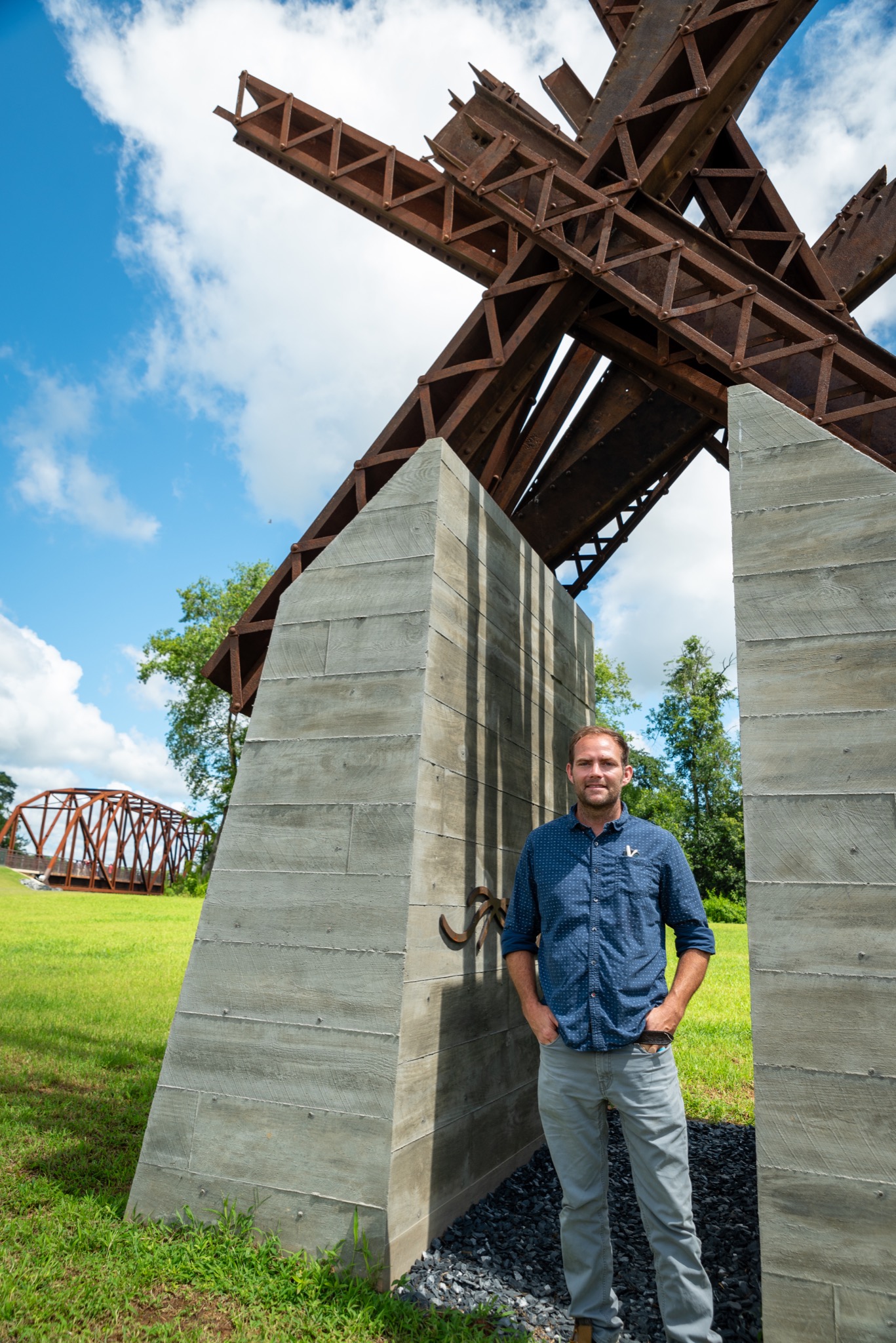
The City of Duluth, in partnership with the City of Johns Creek, Gwinnett County and Fulton County, hosted a ribbon cutting for the recently completed pedestrian bridge connecting Duluth’s Rogers Bridge Park to Johns Creek’s Cauley Creek Park. The City of Duluth also unveiled the park’s newest piece of public art called The Shape of Time and Water.
This is a project 15 years in the making! In 2006, Gwinnett County commissioned a study of Rogers Bridge to determine its structural integrity. The goal was to repurpose the bridge for pedestrians and in doing so, reconnect the communities on each side of the Chattahoochee River. In 2014, the City of Duluth took over the project and confirmed the study results. Duluth then applied for a grant from the Atlanta Regional Commission in order to develop construction plans for the bridge. The grant provided $560,000 to the City and required a local match in the amount of $140,000. As the project is of regional significance, Duluth teamed up with the City of Johns Creek and both Fulton and Gwinnett Counties to come up with the $140,000 match. Evenly split, each local partner contributed $35,000 toward what is referred to as the “preconstruction” effort, which culminated in the development of construction plans.

At the time the plans were in their initial stages of development, it was not yet known if the bridge would be rehabilitated or replaced. Along the preconstruction journey, it was determined that the existing bridge was eligible for the National Register of Historic Places due to its unique construction method. The existing bridge was a 228’ long pin-connected Pennsylvania Petit truss. As such, the design team carefully documented the bridge’s history as well as its current condition. Ultimately, the Department of Natural Resources agreed the bridge could not be salvaged as is and approved its replacement. Concurrently, the preconstruction team reached out to citizens and stakeholders through various meetings and public open houses held in multiple locations (in multiple languages) to gain feedback as to what the ultimate users of the facility would want. Participants voted on their favored selection of bridge type and it was ultimately determined that a replica truss would best suit the needs of the end users. Both Councils and both Commissions concurred and the design team moved forward with developing construction plans for the replica truss.
The preconstruction process took about 4 years to complete and followed strict state and federal guidelines. Once again, the City reached out to the Atlanta Regional Commission and the Georgia Department of Transportation to assist with funding of the construction. And again, the four local partners came together, this time to participate with $350,000 each for a local match of $1,400,000. GDOT covered approximately $700,000. And ARC covered the remaining approximate $5,100,000.

“The partnership of two cities and two counties to honor our past by building back a replica of the original 1912 Rogers Bridge speaks volumes about the importance of regional collaboration. This new bridge will be enjoyed by so many people for the next 100 years,” said City of Duluth Mayor Nancy Harris.
The City of Duluth would like to thank all our partners, without whom this project would not have been possible: FHWA, GDOT, ARC, Fulton & Gwinnett Counties, Johns Creek, the Thomas & Hutton/CHA design team, the KCI inspection team and the Astra construction team.
“It was an honor to lead this project. It’s part of the legacy I and the entire list of stakeholders and participants are blessed to leave behind for generations to come,” added Margie Pozin, Project Manager & City of Duluth Community Development and Engineering Director.

After officially opening the bridge, Duluth officials were excited to introduce the newest piece of public art. Entitled The Shape of Time and Water, the 27’ structure features two massive concrete columns inspired by many stone and concrete bridge columns along the Chattahoochee River, topped with 110+-year-old steel from the original bridge. “The Rogers Bridge Art piece was selected because it incorporates the metal and pins from the original bridge, but it is supported by the concrete foundations used for bridges today. It fully represents the old and new,” said Greg Whitlock, Duluth City Council Member and Duluth Mayoral Candidate.
The artist behind this piece is Phil Proctor from Nucleus Sculpture Studios. Proctor is a professional sculptor practicing in Atlanta since 2003 who has developed a professional reputation in the public art community by his involvement in the infrastructure of public art.

“The idea came from the shape of time. Time is what shaped the bridge; it’s old, its rusted and time ultimately determined when it was time for the bridge to come down. So, the base of the sculpture is meant to represent the bridge columns, and the top of the sculpture is meant to represent the gesture of water as the water breaks on the bridge columns” said artist Phil Proctor during a recent visit to his studio. “A literal passageway, a symbol that represents the connection between two places; the driving force for the restoration of the new bridge and the partnership of the communities it connects.”
Phase II Improvements at Rogers Bridge Park will be underway soon. The new bridge will remain open (with possibly temporary brief closures during construction) but park and boat launch access will still be restricted during the construction process. Phase II will include two large parking lots with 118 new spaces, a walking trail, a new pavilion, the trailhead, and the repaving of Rogers Bridge Road as it leads into the park. This is expected to be completed by early 2024.

Photography provided by Dustin Grau Photography.

Love this!